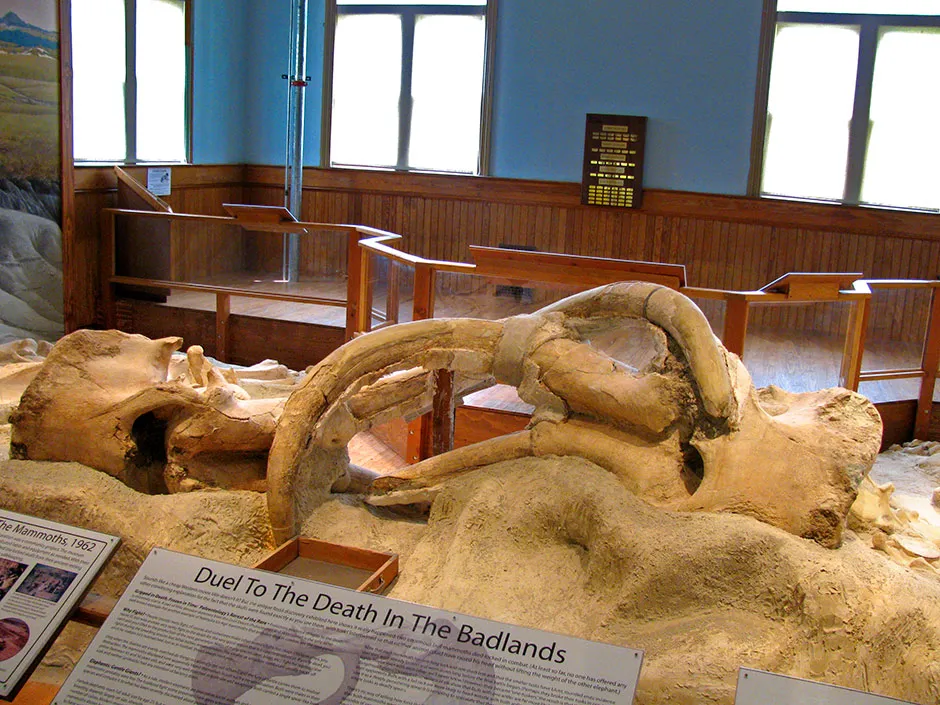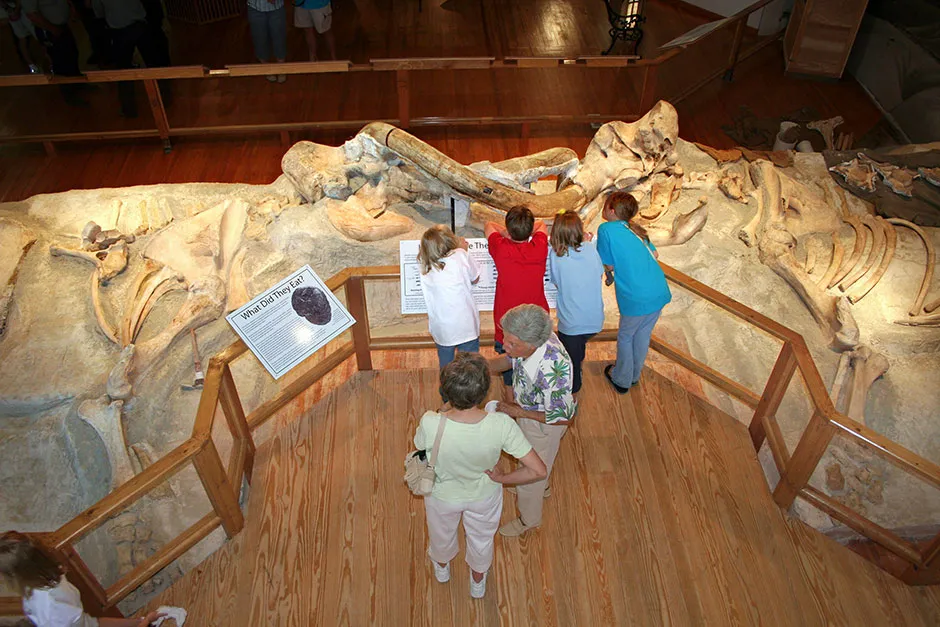Watching two bull African elephants face off on the vast savannah is a sight to behold. As the world’s largest land animals, weighing more than five tons, they engage in one of the mightiest, epic battles in the animal kingdom.
This fight for supremacy often occurs when bulls enter an annual state known as musth, a time when their urge to mate is in overdrive, similar to deer in the rutting season. Temporarily pumped full of testosterone, as much as 60 times the normal levels, they become extremely aggressive and challenge other bulls for dominance, territory, and the right to mate with females.
Smashing their heads together, interlocking their tusks, and pushing with all their might ends with only the strongest elephant standing victorious. Sometimes these fights are to the death. All species of living elephant express similar displays of dominance, and this might suggest that their prehistoric ancestors did the same thing, or something similar.
In summer 1962, while walking in the grassy badlands of Nebraska near the small city of Crawford, a pair of workmen were surveying the area for the future construction of a dam. Little did they know that this routine trip would lead to a major mammoth discovery. Scanning the area, they stumbled on a large femur bone poking out from the side of a gully and sought an expert opinion.
It turned out that they had found part of the leg of a Columbian mammoth (Mammuthus columbi), one of the largest mammoth species, standing up to four meters at the shoulders. This was clearly an exciting find.
Wasting no time, palaeontologist Mike Voorhies, who was just completing his undergraduate degree at the University of Nebraska–Lincoln, was given the task of investigating what could turn out to be a complete skeleton. Voorhies asked around campus whether anybody wanted to come dig up a mammoth and assembled a team of young people, including college students and high school seniors.
Read more about ancient life:
- Ross Barnett: Why should we be interested in prehistoric animals that aren’t dinosaurs?
- De-extinction: Can we bring extinct animals back from the dead?
- Ancient mammoth bone circle reveals how Ice Age humans lived
Starting at 3am every morning and ending when the heat of the Sun became unbearable, the team took just over a month to complete the dig. In the first few days, as the crew exposed more bones, it became clear that the skeleton was going to be complete.
They began to chip away at the sediment surrounding the all-important skull and were initially disappointed with what they revealed. One of the tusks was facing the wrong way. The team contemplated whether the mammoth had somehow faceplanted and broken its tusk in doing so, which was frustrating, because they had hoped it would be a perfectly preserved skeleton.
They continued to expose the skull, and only then did realisation hit. That reversed tusk did not belong with the skull at all but to another mammoth.
Now, it is not uncommon to find mammoth remains associated together. In fact, several mammoth sites around the globe have revealed multiple mammoths, often preserved in large bone beds. But this site offered something unique: two mammoth skeletons preserved with their tusks tangled together. Had the team unearthed two bull mammoths fighting to the death?
Based on the roughly equal size of the skeletons, along with an assessment of their teeth (including the tusks), which are used to tell the age of an individual (just as in living elephants), they were identified as adults around 40 years old. Although young male elephants will often play fight, they usually enter musth in their mid-to-late 20s.
Is it therefore possible that these two bulls were in a state of musth when they were fighting? Evidence from frozen mammoths found in Siberia shows they had specialised temporal glands, the same glands that are found on each side of the head in living elephants, which secrete a chemical substance when the bull is in full musth. So, it seems very likely that these bulls were locked in a musth battle, perhaps fighting for the affection of females.

When fighting, living elephants with straight tusks are able to stab their opponents and inflict much deeper wounds (using the tusk sort of like a spear), but those with curved tusks use them for pushing and interlocking and rely more on head-butting to do the damage. These mammoths’ tusks were long and curved, making them unsuitable for stabbing; the tusks were primarily used to interlock, providing the necessary leverage to twist and push during combat.
The pair are preserved in direct contact, with their tusks twisted around each other. One of them has a complete right tusk but a snapped left tusk, whereas the other has a complete left tusk but a broken right. The stub tusks have blunt, rounded edges, which indicates that they were broken long before the fight erupted.
The unusual tusk damage meant that the two were able to move in closer, without their tusks immediately clashing, and this is why they became stuck. Although rather gruesome, the tip of one of the tusks pokes into the eye socket of its opponent!
Locked together, both physically exhausted from all the pushing and pulling, after a final twist to shake loose, one of the mammoths slipped and dragged the other to the ground, and both fell to their eventual death. They fell in such an awkward way that their tusks overlapped and their bodies were trapped by each other’s immense weight. (Each is estimated to have weighed ten tons or more.) It is reasonable to assume that one of the combatants might have been killed during the fight but was stuck with the other as a result.
It is unusual for living elephants to become tangled by their tusks, which are known to occasionally snap during fights. However, similarly, when elk and other deer fight during the rutting season, they can sometimes get stuck. In very rare cases, when the loser has succumbed due to the fight but is still attached, the winner will shake free its dead competitor and rip off its head in the process, inadvertently wearing the severed head as a trophy.
If one of the mammoths did die, perhaps the victor was too tired and the loser too heavy that they could not separate. Trapped like this, they would have attracted predators, although none of the bones shows signs of scavenging marks.

Another unusual find was made only after the mammoths had been fully exposed and their bones carefully wrapped in plaster and removed for export to the Trailside Museum, Massachusetts (where they are on display today). Found pinned underneath the front leg of one of the mammoths was a fossil coyote with a crushed skull.
What was it doing there? Was the coyote caught in the most deadly of situations, between two battling bull mammoths, only to be trapped during the fight as the mammoth collapsed on top of it? Or was the coyote a scavenger, preying on the possibly dead mammoth when, suddenly, the living individual fell on top of it? Whatever the case, it seems likely that the coyote witnessed this clash of the titans only to become part of it.
Perhaps the most astonishing thing about this discovery is the extreme unlikeliness of its happening. The pair were obviously engaged in a mighty duel, became stuck together through strange circumstances, and were buried quickly enough – perhaps over years – that their skeletons remained intact, only to be found by complete chance.
To this day, this fossil remains one of the most dramatic ever found, representing the largest prehistoric animals locked in their final battle to the death, facing off just as they were roughly 12,000 years ago.
Locked in Time:Animal Behavior Unearthed in 50 Extraordinary Fossils by Dean R Lomax is out now (£25, Columbia University Press).
- Buy now from Amazon UK, Waterstones or WHSmith